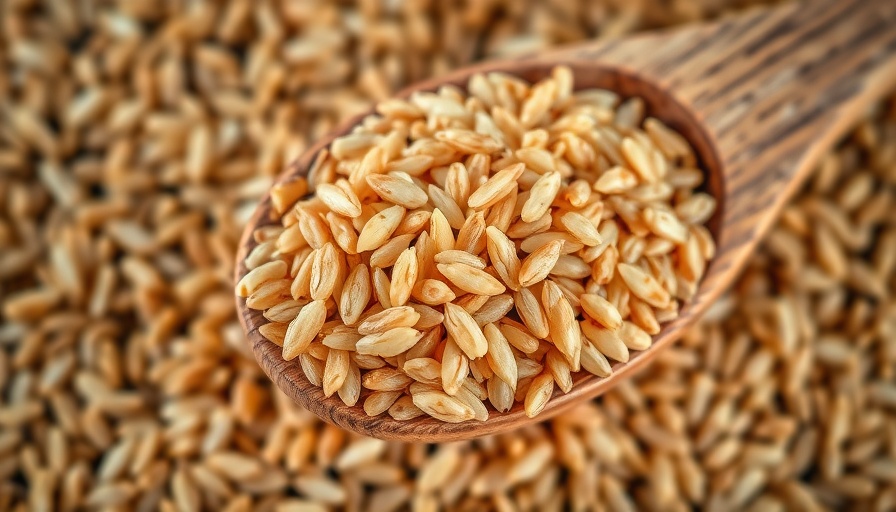
Is Brown Rice Still the Healthier Choice?
If you’ve been turning to brown rice for its supposed health benefits, a recent study may make you re-evaluate your choices. Conducted by researchers at Michigan State University, the study revealed that brown rice contains up to 40% more carcinogenic arsenic compared to white rice, raising concerns about its nutritional advantage.
The Hidden Risks of Brown Rice
While brown rice is lauded for its higher content of vitamins and minerals, the startling findings from the study published in 'Risk Analysis' also highlight the significant risks associated with its consumption. Brown rice has 24% more total arsenic and a staggering 40% more inorganic arsenic than white rice—the very component linked to cancer. This is concerning especially for young children, who are more vulnerable to ingesting uranium from food.
Bread and Butter: Rice Choices Explained
It’s crucial to weigh your options. Brown rice, with its texture and nutty flavor, offers considerable benefits like improved digestion and support against chronic diseases such as diabetes and hypertension. Its high fiber content makes it a great ally for heart health. However, it comes at a price—literally and figuratively—often costing more and having a less palatable flavor profile for some.
Understanding the Trade-offs
In contrast, white rice is processed to remove arsenic-laden layers, resulting in significantly lower arsenic levels. While this means it’s a safer option concerning heavy metal exposure, it also depletes many of the nutrients found in whole grain options. Hence, the debate between choosing brown or white rice is not merely about taste or price; it delves into the essential questions of health, safety, and wellness.
Nutrition vs. Safety: Finding Balance
The researchers propose that parents, especially those with young children, should look into balancing the consumption of brown and white rice. This strategy allows families to enjoy the benefits of nutrients from brown rice while mitigating the risks of arsenic exposure. Several alternative grains like quinoa or barley can also be introduced to add variety and ensure nutritional diversity.
What This Means for You
This study showcases the necessity of ongoing attention to what we consume, reminding us that health trends can shift as new research surfaces. As health-conscious adults, it is essential to stay informed about the foods we choose to nourish our bodies.
Making Informed Decisions
Considering that the general American population does not face acute health risks from rice-related arsenic exposure, it is still vital to be wary of choices, especially when it comes to children. By understanding these complexities, you can make informed dietary decisions that benefit your health while reducing potential risks.
As you navigate the world of nutrition, stay open to new findings and be selective about your dietary staples. Research and awareness facilitate better health choices. So, whether you prefer the chewy texture of brown rice or the fluffy nature of white, balance is key. Incorporate a variety of grains, and remember that moderation is your friend.
 Add Row
Add Row  Add
Add 




 Add Row
Add Row  Add
Add 

Write A Comment